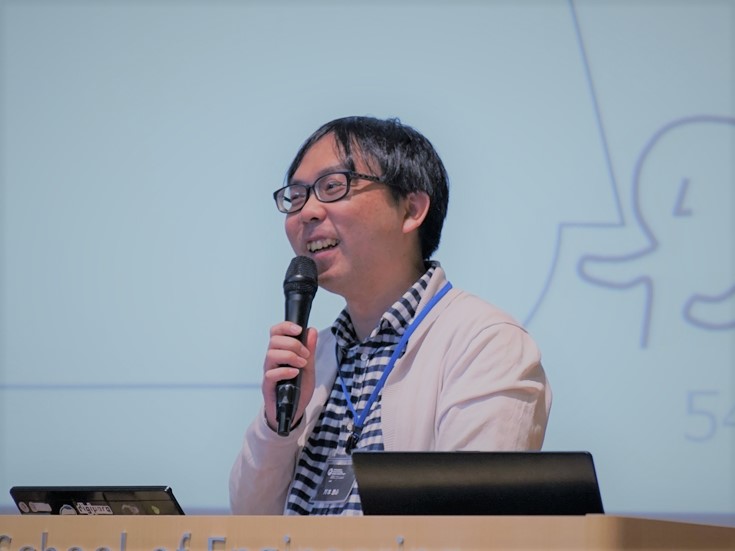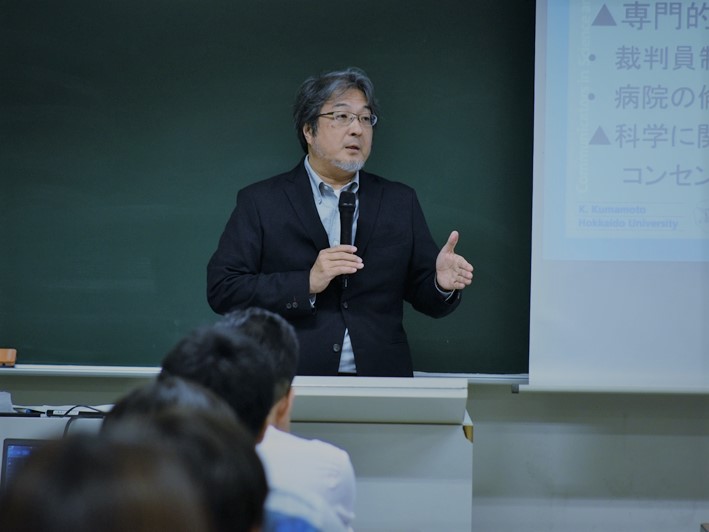Program feature
CoSTEP offers a program that systematically learns the knowledge and skills that science communicators need to acquire in order to produce communicator talents.
The CoSTEP program is characterized by its theoretical organization of three pillars and six modules.
Furthermore, by effectively combining the three lesson formats of lectures, exercises, and practical training, a well-qualified education staff with a wealth of practical experience will be able to implement systematized theories.
3 courses
CoSTEP organizes the knowledge and skills that science communicators should acquire into three pillars.
- I. Science Communication Thinking: Students will gain an understanding of the overall picture of science communication, and will acquire the mindset that will serve as the basis for setting issues and making judgments when working as communicators.
- II. A Planning Method for Information Analysis and Action: Students acquire basic concepts for collecting, analyzing, and evaluating information on science, technology, and society, and for making decisions, building consensus, and formulating strategies.
- III. Science Communication Practice: Through various practices, communicators learn the basic knowledge and skills necessary to play a role in society.
6 Modules
CoSTEP provides lectures on the science and technology communicator training program in six modules that follow three pillars.
- Overview of Science Communication: Students will learn the various concepts necessary to conduct science communication, view the overall ideal way of science communication in society, and consider the role of science and technology communicators.
- Expressions and Communication Techniques: You will learn about the various expressions and communication techniques necessary for a science and technology communicator.
- Design for Activities: Students learn about the design required to conduct activities in order to practice as a science communicator.
- Multifaceted Issues in Science and Technology: In addition to having an awareness of specific issues that arise in reality at the interface between science and technology and society, this program fosters the ability to properly understand problem structures through concepts such as ethical, legal, and social issues in science and technology (ELSI), trans-science, and post-normal science.
- Understanding of diverse positions: Learn about the positions of key stakeholders in science communication that science communicators need to understand when working with individuals and organizations in diverse positions.
- Practice in Society: We invite people who are actively exploring the field of science communication in society to talk about their careers, backgrounds of their activities, current situations, challenges, driving forces, and future goals, and present their future prospects as communicators.
Full range of educational staff


In addition to full-time CoSTEP teachers and postdoctoral researchers who have a wealth of experience in science communication, teachers from Hokkaido University other than CoSTEP, as well as external lecturers who have experience on the front lines of the field, including those in the production of broadcast programs, publishing and editing, the operation and exhibition planning of science museums, and various outreach activities, offer a wide variety of classes.
Three types of classes
CoSTEP offers an effective program for learning knowledge and skills in science communication by combining three types of classes: lectures, exercises, and practical training.
Lecture
A class in which students acquire the knowledge necessary for science communication by using classroom lectures and e-learning.

Exercise
A class to acquire the skills necessary for science communication from an experienced CoSTEP teacher.

Practical training
Classes in which students practice science communication using the knowledge and skills they have acquired through lectures and exercises.


